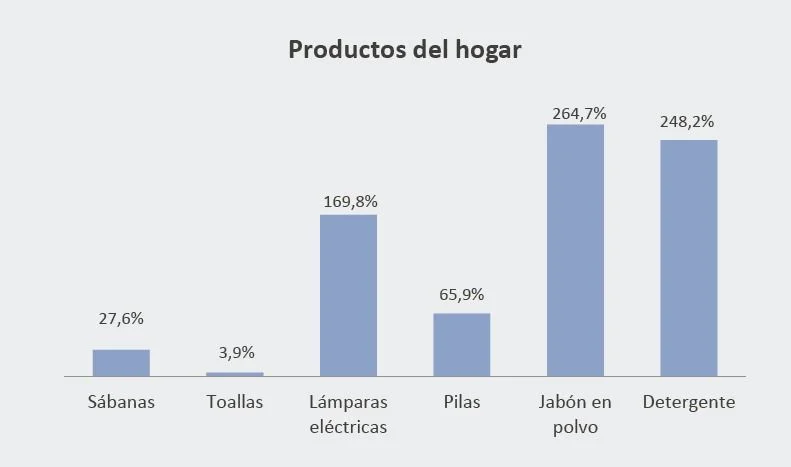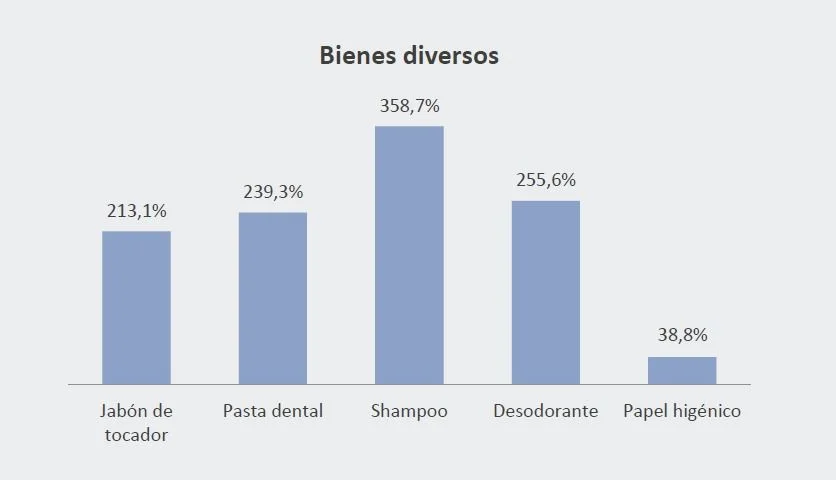The Economic Observatory of the Catholic University of Salto (IPF) published this Wednesday the Indicator of Border prices updated to January. The measurement showed that the price gap between that city and Concordia in Argentina continues to grow.
According to the indicator, for the set of selected goods, and given their weights in the structure of household consumption expenditure, it is 56.6% cheaper to buy said basket in Concordia than in Salto. while seen From Concordia’s point of view, the indicator shows that Salto is 130.3% more expensive.
This indicator compares the difference in prices for a selected basket of 60 items representative of border transactions between the two cities that are surveyed in large stores and reference stores, and the blue dollar exchange rate is used.
Food and Non-Alcoholic Beverages
Food and non-alcoholic beverages It is the category that has the greatest incidence in the indicator and for the measurement, 30 articles are surveyed. In the January measurement, all items are more expensive in Salto, and reached a 152% price difference for the entire division. This is equivalent to stating that Concordia is 60.3% cheaper than Salto.
In this list there are different products of the basic basket such as bread, rice, flour, noodles, minced meat, oil, eggs, sugar, milk, tomato pulp, yerba mate and soft drinksamong others.
The following table shows that 17% of the items surveyed have a price difference of less than 100%. 37% of articles reach a gap between 100% and 200% and almost half show a difference greater than 200%.

Alcoholic beverages and cigarettes
This category is also more expensive in Salto than in Concordia. Wine, beer in supermarkets and cigarettes in the kiosks they show differences of 149%, 230% and 252% respectively. For its part, the difference in whiskey is 83%.
clothing and footwear
in clothing The report indicates that although there is dispersion in the price differences observed, all the items considered are more expensive in Salto. The greatest difference occurs in spring-summer children’s t-shirts, 82.2%, while for women’s jeans and men’s jeans the differences are 51.4% and 39.1%, respectively. For sports shoes, the differences are smaller and are around 20%.
Domestic products
The price difference in this division reaches 128%. ANDPowdered soap is 264.7% more expensive in Salto, while the difference for detergent is 248.3%.

Transportation and fuel
The price of a liter Naphtha in Salto is 164.9% more expensive than Concordia (considering the Imesi benefit) and diesel 119%, while the difference in covers is 13.8%. Without considering the benefit of Imesi, Jump is 249% more expensive.
eating out
In the case of meals outside the home, soft drinks and mineral water have price differences of 153.3% and 80.9%, while for the full hamburger and pizza with mozzarella the differences result in 190.1% and 118.7%.
Miscellaneous goods and services
This division presents a significant difference in prices in most of the items surveyed, reaching 123%. The price differences are 358.7% for shampoo, 239.3% for toothpaste, 213.1% for toilet soap, 255.6% for deodorant, and 38.8% for toilet paper.

In a dialogue with Radio Uruguay, the economist, María José Medin, one of those responsible for the report, indicated that given the flexibility of the border crossing between the two countries, Salta businesses are beginning to feel the impact of competition for purchases on Argentine soil.
During the pandemic, when the border remained closed, Uruguayan commerce in border cities showed a significant increase in sales, which today is beginning to reverse. “We do not have elements to say that this is going to expand much more, but we do have elements to say that it is not going to go down,” projected the economist. Read the full report















